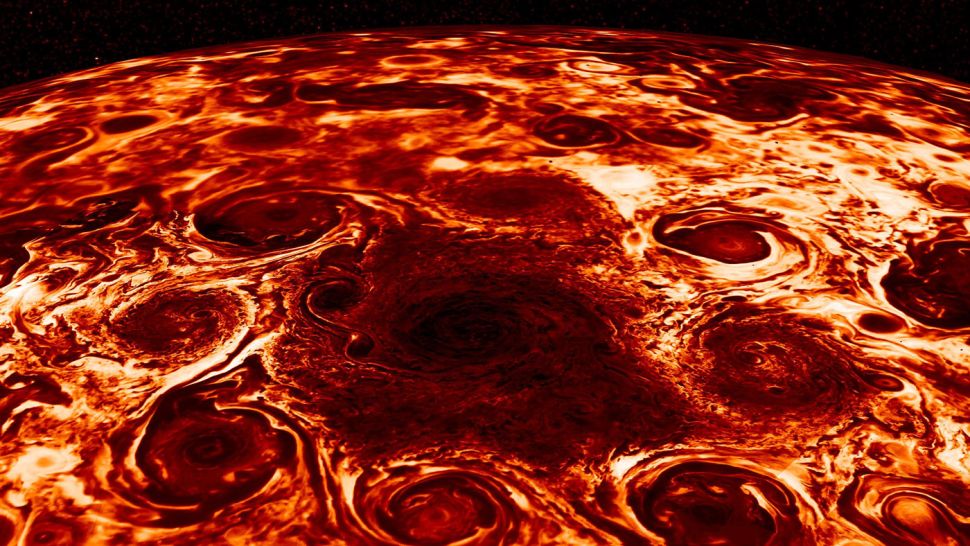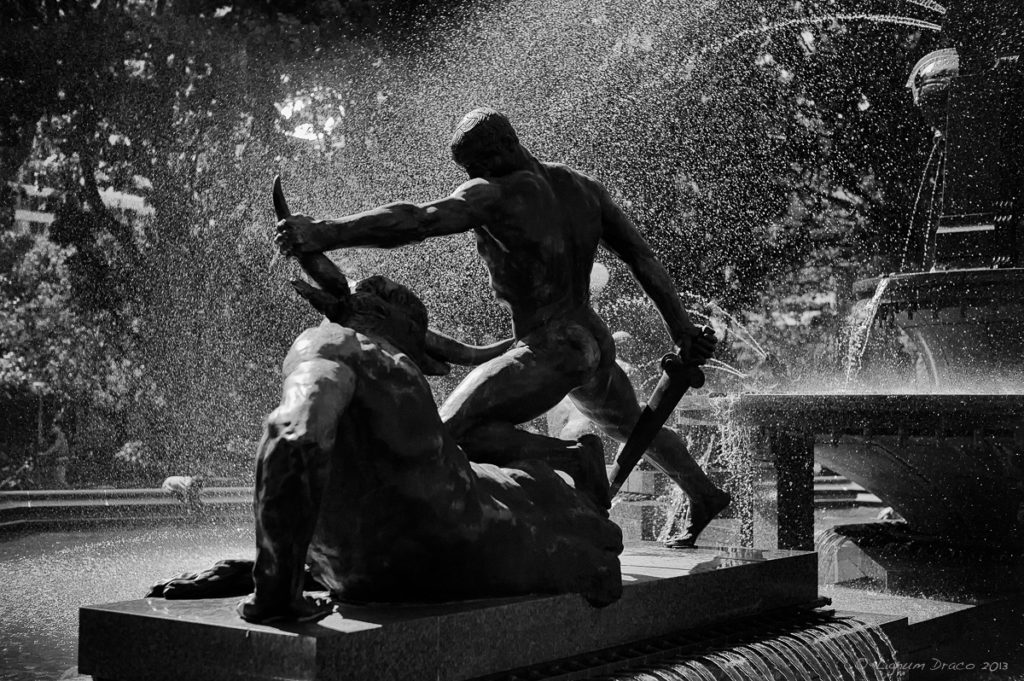Latest from Cold and Dark Stars. Economic laws are sold to us by those in power as natural laws beyond our own control rather than forms of class power that can be challenged and overcome.

I
The whole conversation is rigged.
Now that climate change has turned up on the radar of economists and policymakers, they are pretending we had it too good, that we lived in a utopia of cheap consumer goods, long lifespans, automobiles, and gadgets, and that our own self-indulgence brought us the trouble.1 The economists and industry captains were selling us what we wanted since their product was good: economic growth and cheese sticks. They just didn’t know about the caveat: the perturbation of the earth into a new thermodynamic equilibrium, one that could have extreme consequences in our fragile human systems.
They say everyone shares the blame since we were too happy indulging in their products. That is how it’s sold to us: salvation is to be inconvenienced by not using that straw, that grocery bag, and walking to the corner store instead of driving.2 These meaningless inconveniences are merely psychological pressure points to suggest the greater unpleasantries of a radical solution. They are training us to imagine the greater sacrifice, which inevitably means austerity. Reversing some of this utopia is the panacea of the illness of civilization. If we have grown too fat the solution inevitably means austerity.
They know this story is awful, that it is a hard sell. But it does a couple of things. First, it sells the decisions done by power brokers in the last two centuries or so as overall good, the unsustainability an unfortunate caveat. Whatever comes next must look like the present social order, because it is good. Having a tiny percentage of the world population controlling the resource distribution and the rest having to fight for certain “jobs”3 that decision-makers, asset holders, and professionals have decided are useful in order to warrant access to nourishment and shelter is seen as a good and realistic model. The second thing it does is quite magical. Because this story is a hard sell, and normal people are not willing to sacrifice their lifestyle, the elite can pretend they are not pushing for change for the demos does not want it.4 The poor democratic souls!
Finally, the culmination of this story is an argument for human nature. They say humans are naturally greedy convenience seekers and have short attention spans. According to the educated, cable tv consumers, and anxious mortgage and index fundholders, the majority won’t buy the story because human nature is diseased.5 There are two corollaries to this story: that the present social order is perfected for the human soul, and there is nothing to be done because any “better world” is incompatible with the human soul.
This story is such a monstrous, self-serving con that it should infuriate any person that dares to use their brain.
II
The above story can only begin to be questioned by reassembling many of the concepts we inherited from many smart, intellectual types.
Perhaps this reassembling must start within me. Many of my past writings have been about solutions to the ills of something called capitalism. One identifies this discrete epoch of “capitalism” and then describes the force that will destroy it. This capitalism, a logic that permeates the world, manipulates all living things for the purpose of profit/capital growth. This includes the destruction of many beings and worlds for some venal abstraction. The way it goes is that there is no agency behind these structures, the economy, the market, or “capital” are autonomous machines with their own inner programming, the businessman, workers, and politicians merely its puppets.
Usually the expositors of this story are proud that it counters ordinary common sense. Much of the uneducated instincts you can follow in youtube, or eavesdrop at the bar, blame the problems of the world on a group of people with inordinate influence, hence the prevalence of conspiracy theories. The instinctual story gives a large agency to the “puppet-masters” that are made of flesh and blood. The intellectual, such as a certain breed of Marxist, will say that deposing the flesh and blood “puppet-masters” would not do much since the only puppet master is capital.6 How do you overthrow Capital, which is G-d?
This argument is structurally the same as the neoliberal argument. It claims that there is something called the Economy that follows certain laws of motion, and these laws of motion say that the Economy would become crippled the moment the State is used as a tool against the elite, for devaluation and capital strikes would appear.7 This “Economy”, which is based on reification of certain limited, mathematical models in textbooks, has become a favorite sword of the right-wing to defend congealed interests.
I am not claiming the scenario exposed by the neoliberals and the Marxists that parallel them is unrealistic. Instead, I would argue that what they refer to as the “Economy” or “value” is merely a power relation, imposed by a class upon the other, in other words, a human relation. The economic problems we tend to talk about, such as capital flight and devaluation, are merely questions of power and therefore freedom. By reframing this dialectic in terms of power, freedom of is injected ontologically; the scaffolding is made of humans deliberating.
One could counter my argument by saying that there is a certain impartiality of the economy. Industry captains can’t merely price their commodities at any value they wish. Establishing more humane labor laws in their industries abroad, or socializing certain industries, would make the United States less competitive in the global market, which would deny the state important revenues that could be used to build schools or hospitals.8 Yes, in some futures, some very realistic ones, this could happen. But it’s not because of some objective “Economy” that favors certain rules over others. It’s merely a question of power.
Instead, powerful agents today are embedded in a network of power nodes, and they must compete and maneuver against other power brokers. This creates emergent tidal waves, that may sweep across the network of nodes, creating the notion of an impartial earthquake. But at the end of the day, this turbulence cannot just be categorically tamed with “laws”, and the ripples still are shaped by the hierarchy of sovereigns. This is the reason why some countries can run higher debt tallies than others, or why sometimes counterintuitive policies such as quantitative easing do not cause catastrophic inflation. And it is in this picture that one may find the answer to politics in this warming world.
Let’s come back to the “uneducated” instinct, the vector that points to conspiracy theories. The instinct is partly right but also flawed. It is a healthier instinct than the intellectualized, anthropomorphization of the “economy” and capital since it at least offers the possibility of freedom. But the flaw of this instinct is that there is no discrete entity called the elite that controls the world.
Rather, it is a continuous distribution, a gradient across a fluid of power. This gradient radiates from the billionaires at the top but also includes the professionals that monopolize certain technocratic jobs, the white families that own assets and index funds (which usually are represented in the mainstream, think of the GOP and the DNC), and the meritocratic elites that structure the job and educational pipelines so that certain people are destined to lord over others. But even these “little” bourgeoisies are an approximation, as class power isn’t a discrete stratification but a continuous gradient. This is the problem of the slogan “against the one percent”. A social system cannot be sustained by the support of only a tiny elite. And a political project that does not bring reckoning with the current power gradient will fail in changing the story.
The solution then is to somehow nudge this class power vector into another direction, which is ultimately what Marx wanted.
III
The question of power is very deep. Nietzche thought everything was power all the way down, the immanent substance of the Universe. Hobbes referred to value as power, and Adam Smith, the father of classical political economy, approvingly cited Hobbes’ quote.
It’s a banal question as well. We identify that the state ultimately has the right to kill us, throw us into a cage, and force us to act in ways we don’t agree with. We remember the bully at school, the authoritarian father. Power has scarred all of us, and we secretly desire it. Some of us play with these roles in the bedroom, perhaps trying to exorcize the immanence of power through the most primeval combination of sweat and blood.
Power is interwoven with freedom. Power cannot be understood as merely inertial, the violence of blind laws. This is not because power is an endeavor of humans only; in the same way Nietzche thought power was immanent to the Universe, so is freedom, and ultimately they are both the faces of the same Ultimate. Power is arbitrariness which is freedom.
Let’s analyze how an ontology of power and freedom enriches the original story. Global warming is often explained as a straightforward process of quasi-deterministic laws. In the last two centuries, humanity has experienced unprecedented economic growth, which economists have tied as being coupled with carbon emissions. The carbon dioxide in the atmosphere acts as a powerful greenhouse gas that traps the radiation from the sun, preventing the escape of heat into space. As the amount of atmospheric carbon dioxide increases, less radiation is released into space, increasing the temperature of the Earth. This increase in temperature will feed into dangerous feedback loops, such as the reduction of ice cover, or the enhancing of other powerful greenhouse gases such as water vapor and methane.
The economists then argue that global warming would cause GDP losses. Extreme events such as floods and droughts would negatively affect agriculture, livestock, infrastructure, and health. These damages, in turn, could cause teleconnections into other sectors such as finance.9
However, this above account is impoverished in so far it occludes the role of humans deliberation, and therefore power. It does not reveal the malleability and contingency of the coupling of economic growth to carbon emissions, or our understanding of GDP. Furthermore, the entities of the Earth-system are considered inert, subject to deterministic laws.
A better and richer account could be the following. The current sovereigns of the Earth thought they could control it to do their bidding, as if the earth system, with its water vapor, oceans, ice-sheets, and cyclones, was a submissive object that will lay bare to our manipulations. The power of these sovereigns is distributed but stratified, so there is not only one king, and the emergent processes of these networks of deliberations give rise to the apparent “impartiality” and the illusion of law-like behavior. This complex distribution of power is often referred to as the “economy” or the “market”, but this conceptualization often hides the element of deliberation and freedom of its actors, subsuming them under scientific regularities. The lack of absolute monopoly over the commodities from some of the players gives the appearance of laws that exist outside the deliberation of States, notwithstanding the violent and colonial monopolies (e.g. East Indian Company, Hudson’s Bay Company, Dutch East India Company) that emerged from the birth pangs of the current world system.
The market becomes an illusory category, a mystification of the fluid of nodes that embeds together power brokers like the state, the creatures and objects that form the Earth, and other sovereigns, human formations such as insurgent parties, activist groups, and clandestine paramilitaries, etc. Ultimately, this ensemble forms an immanent, turbulent fluid, full of vortexes, tidal waves, and shocks, horizontally wide but stratified. One of the stratifications of this fluid is class power. Class power can be represented as a multidimensional vector along the stratification of this power-fluid. This vector not only encodes 19th-century factory bosses, or the top 0.1 percent but includes all sorts of asset holders such as mortgage holding, white families in select zip codes that concentrate the means of intergenerational wealth.
This power-fluid is alive with freedom. I stretch the term life here, for it does not only include what is referred as life by biologists, creatures with a chemically defined genetic code but also includes the turbulent ocean and atmosphere, the chemical and hydrological cycles that enshroud the Earth with clouds, the cyclones caused by the interaction of the earth’s spin with temperature gradients. Sure, some aspects of this system appear fairly predictable and therefore give the appearance of determinism and lifelessness. For example the orbit of the Earth, the trajectory of an individual electron, the weather within one day, the job market within a month, the average lifespan of a dog. However, these systems are tractable until they aren’t, as many of them may become subject to shocks in the same way the behavior of a friend might be familiar until they fall into a deep depression. The emergence of determinism and stochasticity is often seen as noise, as an effect of not having enough information about the system. But this view is just a theology. Regardless of whether we find this noise as ontologically superfluous, the indeterminism still slaps us with full force. The Earth system is not behaving as it “should”, as the economy experiences shocks, love sometimes withers, and flying cars haven’t appeared but the internet has. A more interesting and useful ontology is acknowledging the freedom and agency of matter, not falling into the Christian trap of considering only humans free.
The structural determinists, such as the economists and their laws, and the Marxists and their “value” are merely tweaking the Christian theology, for the old philosophers of Christendom considered matter dead while the human being was ensouled. These economists/Marxists merely take this incorrect ontology of dead matter and include the human being (and the world system) as made of billiard balls with positions and momentum vectors assigned to them.
Against the “price distortion” and “law of value types” that think of themselves so clever because they wield vague regularities as absolute laws, power, the real immanent substance, is made of agents consciously deliberating, albeit lacking complete omnipotence, and surrounded by a fog of war. It is in the game of power where the class struggle becomes intelligible.
IV
Class power could be summarized as the strategic capture of resources of one class (Colin Drumm) over the other. Class here is a demographic description, that only becomes intelligible in the sense that it is hierarchical: a class captures resources at the expense of others. Class power should not be thought of as a discrete distribution of a couple of classes. Instead, it is a continuous distribution.
The most important theorist of class power was Karl Marx. His life’s project was to show that the economic and political stories were cons validating the most powerful class during his era: the bourgeoisie. The law, religion, ideology, and even some “science” were merely justifications of the bourgeoisie’s class power, narratives that made the strategic capture of resources of a tiny elite seem “natural”.
Those who are privileged reflect the cosmic, static order. The Chinese emperors came from Heaven, God gave the right to kings to rule, and today the elite rule because they reflect human nature. The elite embodies democratic nature to accumulate property and assets which inevitably leads to the optimal hierarchy.
Here is where the con within the stories about global warming is revealed. The current narrative of climate change is sheer class power. Yes, the elite must acknowledge the power of the earth system to destroy the civilization they rule. But at the same time, they must remind their subjects that right now they have the highest possible standard of living, and that nudging the system too much would destabilize this standard.
In fact, it is the projection of their power that makes us addicted to their world. For it is not only chemical or sexual dependency that their products offer, such as processed sugar, or digital porn. More importantly, they sell us the illusion that through their products we can become like them, socially recognized by the rest. The search for social recognition is ancient. Amongst certain small, indigenous egalitarian societies, “big men” try to outdo each other with gifts and potlatches to become honored. In modernity this impulse is channeled into owning larger houses, better cars, having a degree from a good University. They rob the children from their childhood so that someday they can become accomplished professionals that can be paraded in the deranged pageantry of the technocratic castes. Meanwhile, we all end up playing, touching, and caring less, for we are conned into keeping up with the Joneses.
This is not human nature, it is the product of a certain group of people trying to maintain their privileges at all costs, and the historical directionality imposed by the phenotype of that modern elite (capitalists, bankers, professionals, asset holders). It doesn’t matter that some of them may suffer in the process – their kids may kill themselves because of the pressures of grad school, or professionals may develop mental illnesses by stuffing their skull with information concerning their assets, debts, and career moves. What matters is that they are not the worst off, that people below them are more miserable.
This world that serves the elite was manufactured through deliberative actions, even if decision-makers could not be aware of all the outcomes. The stamp of the asset holders’ freedom scars every planetary entity. Therefore, It is only through the deliberative actions of the non-asset holding classes that this world can change.
V
The structures of the world are not absolute and can be nudged into a direction through the imposition of power
There is no autonomous capital that is subject to its own internal desires. There are no “objective” economic laws that the neoliberals love to hark on about. The spurious regularities of innovation, stable currency, and debt are place holders for embedded power dynamics that are linked to imperialism and the quasi-monopolies of financial systems (American and English banks), technology (intellectual property law and corporate secrets), and monetary inertia triggered by the sheer violence of world wars (the death of the gold standard, the creation of the Breton-Woods regime). It is power all the way down. When someone talks about “innovation”, “entrepreneurship”, GDP, and inflation, chances are that they are interpreting noise (e.g. random initial conditions that gave access to important resources and tools), or mislabelling the spurious regularities of the powerful (quasi-monopolies over the financial system like the US and the U.K own).
However, the freedom of the powerful opens our own possibility of freedom. There are no blind laws that oppose the stability of the earth system, the creation of a softer and brighter world of more play and touch. The streamlines in the power-fluid that carry the world into warming are imposed by certain, powerful entities. Yet we can impose our own cyclones, jet-streams, and eddies by building channels that change the course of the fluid.
VI
The change of conversation always implies the imposition of class power. And class power is not merely words, but institutions, resources, an army – in other words, the state.
Perhaps we can find an interesting example in the Russian Revolution, as Andreas Malm noted.10 In 1917, famine scourged Russia, probably due to a climate fluctuation. The tzarist regime was too incompetent and married to the interests of landlords to be able to use the machinery of the state to solve the food distribution problem. Instead, Lenin posed the question of the workers and peasants taking power, organized through a political party, to solve the food allocation problem, since the interests of the non-propertied classes aligned with the solution. There is a pedagogic parallel to our current predicament here. The Earth-system is becoming dangerously unstable, to the point where food price variability may nudge civilization towards collapse. The state’s scaffold is too married to asset wealthy classes to be able to enact the radical changes required for a flourishing society that responsibly stewards the Earth system. Only a Party that is not subject to these interests, that is, a Party of workers, farmers, the indigenous and racialized, could realistically steward the Earth system and therefore save civilization.
If a Party of this type does not emerge, reactionary formations may occupy the vacuum left behind by environmental instability. The far-right is excited about the incoming climate refugee crisis to help them gain support for a xenophobic ethnostate.
The question of power is intimately linked not only to the access to resources but also to how we ethically and spiritually interface with those resources. The response to climate change cannot merely be some imposed austerity in consumer goods while the power structures that interface humans between themselves and the Earth remains intact. The question of climate change can’t be resolved through the technocratic administration of resources while human relationships and the associated conceptual universe stays the same.
VII
Throughout the last century, the ruling classes have rewired our serotonin pathways to become addicted to what they offer: cheap porn, diplomas, credit, status, SUVs, and plane tickets. Meanwhile, touch, community, healthcare and permanent and secure homes are becoming more scarce. What couldn’t be more damning evidence of our screwed-up serotonin pathways than the declining rates of sexual intercourse and the ballooning debts and mortgages? The society of the spectacle that erodes our power over our own lives is linked to the diffuse sovereignty of corporations, asset holders and real estate moguls. Meanwhile, this turbulent society is coupled with the increased instability of the earth system, leading to a warming world.
Therefore, only by building a movement armed with a political program that visualizes the totality that binds together the earth system, resource allocation (or stewardship), and the ethical dialectic between humans and the Earth can we begin to reckon with this warming world. Right now, we get caught by loose threads of the unstable system – we grasp in a piece-meal fashion at automobile culture, air travel, the meat industry, or “consumerism” in isolation; this can only generate confusion and solidify the supremacy of the elite. Meanwhile, such a political movement must instead strike into the center of this class structure, the engine that weaves many of the false narratives of climate change. Modern class power has eroded human relationships, replacing play, sexual freedom, and the dissolution of the ego into the Universe itself. Only a life-affirming politics can replace the destructive power of asset holders.








